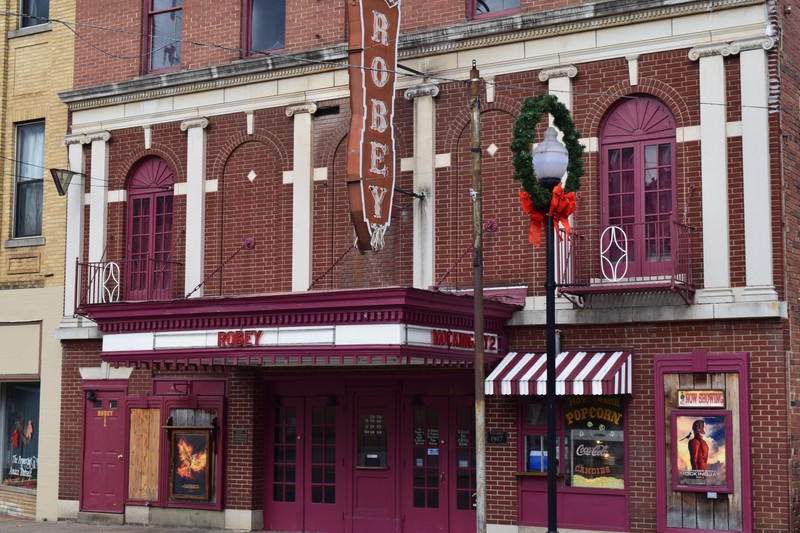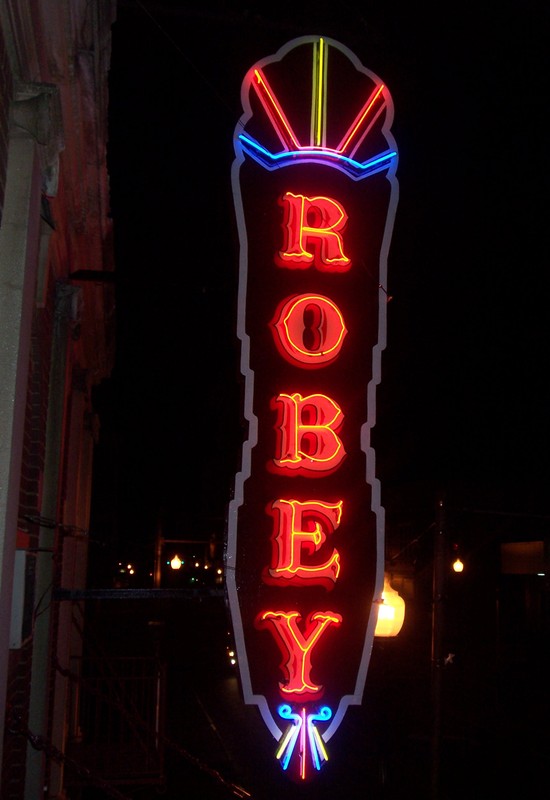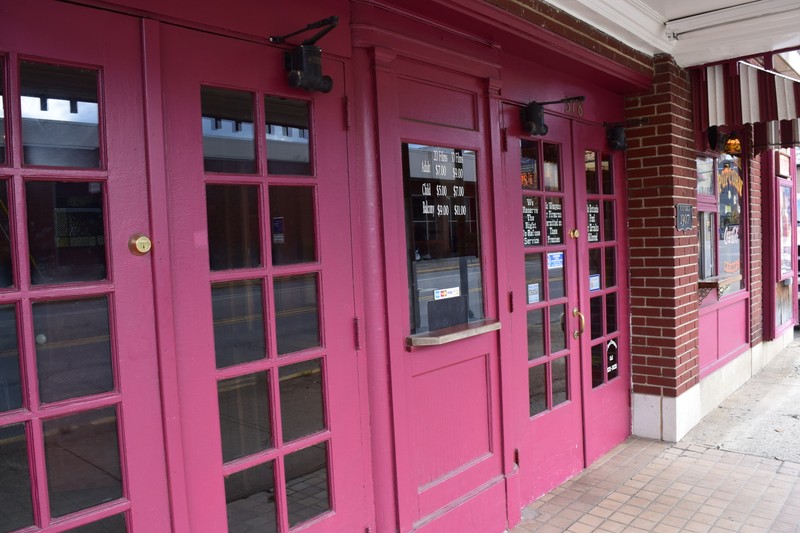The Robey Theatre
Introduction
Text-to-speech Audio
Images
Other than a few minor changes, the theatre looks the same today as it did following the 1926 remodeling.

The theatre sign lit up at night.

The only time the Robey has ever been closed in its 100 plus years was for a few short months during the 1926 renovations.

Backstory and Context
Text-to-speech Audio
Hamond Robey was born on February 28, 1881. He went to embalming school in Cincinnati and his first business venture was a funeral parlor in connection with a furniture store with Rev. E. J. Harris. Mr. Robey was involved in a variety of business during his life. He was the first to supply electric to the city of Spencer and even built a commercial power plant which he sold in 1915. Additionally, he introduced bowling alleys and roller skating to Roane County. Mr. Robey was a member of the Free Masons, a charter member of the local Rotary Club, a loyal Democrat and a member of the now Memorial United Methodist Church in Spencer. He was also a farmer who raised cattle, sheep and hogs. His businesses made Mr. Robey a prominent local figure who helped to shape the development of Roane County.
The theatre opened in a time of economic prosperity for the area. In 1907, the community was experiencing a boom in local gas and oil industry. This growth was also causing an increase in population. It was originally named Dreamland and was only a sideline to Mr. Robey’s other businesses. The theatre was renamed and moved around several times prior to 1911. In 1911, Mr. Robey constructed a three-story building and re-opened the theatre, calling it The Auditorium. At this point in time, silent films were the only type of motion picture available.
In 1926, the theatre underwent extensive renovations. The front façade was redone and the theatre was expanded in the rear. While construction was being completed, Mr. Robey opened the Tentatorium in a field nearby. It was a large tent where he continued to show silent films while construction was going on. The theatre reopened in September of 1926 under its new and current name, The Robey Theatre. To keep up with the developing entertainment industry, Mr. Robey installed sound equipment in the late twenties. The first “talkie” to be showed at The Robey was “Alias Jimmy Valentine” which featured William Harris and Joan Crawford.
The theatre today looks much like it did after the renovation in 1926. The building itself is three stories high and is a blend of Italian Renaissance and Neo-Classical Revival style. The façade features semicircular arches on the second floor. The outer two are above glass double doors with metal balconies. All the arches are framed by stone pilasters. A marquee anchored to the second floor with chains covers two double-doors and the ticket booth. Above the marquee hangs a large neon sign that says “Robey.” On the right side you can see the concession window with a red and white striped aluminum awning.
The first floor of the building contains the lobby, ticket booth, concession stand, and rest rooms on the left side. Originally the concession stand was in the center of the lobby, however, in the 1960’s the front doors and the ticket booth were moved forward by several feet and the current concession window was created. The auditorium is accessed by doors on either end of the lobby. Seating on the inside is divided into three sections by two aisles. Along the walls inside the auditorium you can see old memorabilia and movie posters from popular movies that have been shown at the Robey. The entrance to the balcony is on the right side of the lobby next to the concession stand. The second floor contains the balcony, projection booth and manager’s office.
The third floor is actually not a part of the rest of the theatre, but was the meeting hall for the local chapter of the Knights of Pythias. The Knights of Pythias held the deed for the third floor until they sold it to the Robey family in 1950. Outside on the third floor, you can still see the white, painted letters “K of P.”
Throughout its history, The Robey has played a central role in the social life of Roane County. The theatre played host to all sorts of local events including plays, high school graduations, and fiddle contests. There were also weekly wrestling matches sponsored by the Spencer Athletic Club. The theatre even held several lyceum courses during the winter months.
The Robey family owned the theatre up until 1979 when it was bought by T. Michael Burch. Mr. Burch continued to run the theatre until he sold it to Aaron Richardson, the current owner and operator. Although the Robey looks much the same as it did in 1926, there have been some minor changes.
Mr. Richardson has done a lot to preserve the theatre by restoring several parts of the theatre. On the outside, the third floor windows and the balcony doors were replaced, and the ledge and neon sign were restored in 2007. The inside of the lobby was carpeted for roughly 50 years, but the carpet has been removed to showcase the tile from 1926. Additionally, the seats on the center section of the auditorium were replaced in 2007.
The turn of the century has brought with it some major changes to the inner workings of the theatre. In 2011 the theatre made the switch to digital. With this switch came a new screen and a whole new sound system.
The Robey Theatre is a remarkable piece of living history that continues to push forward into the 21st century. Its long career is a testament to the importance and value of the theatre's role within the community.
Sources
Bishop, William H. History of Roane County 1774-1927. Waynesville, NC: Don Mills, 1991. 388-90. Print. Mylott, James P. A Measure of Prosperity: A History of Roane County: Mountain State Press, 1984. 338-343, 408-411, 448-451. Print. Nida, Jack and Roane County Historical Society. Images of America: Roane County. Comp. Charleston, SC: Arcadia, 2007. pg102,123. Print. Deed of Sale from Thomas Michael Burch to Aaron Richardson, June 2nd 2005, Roane County, West Virginia, Deed Book 4343, page 429, County Clerk’s Office, Spencer, West Virginia National Register of Historic Places, The Robey Theatre, Spencer, Roane County, West Virginia, NationalRegister #89000182 Richardson, Aaron. Personal Interview. 22 November 2015.
